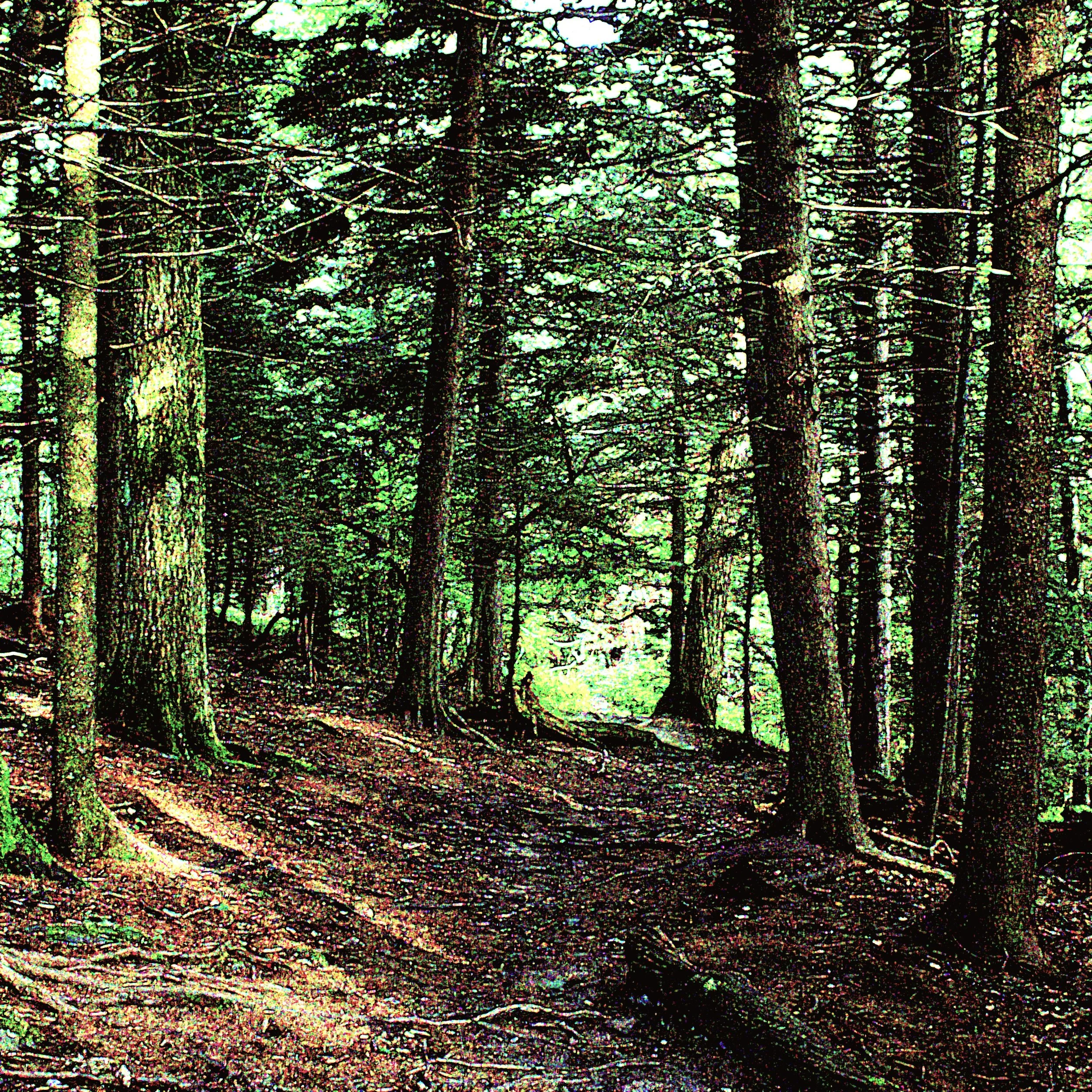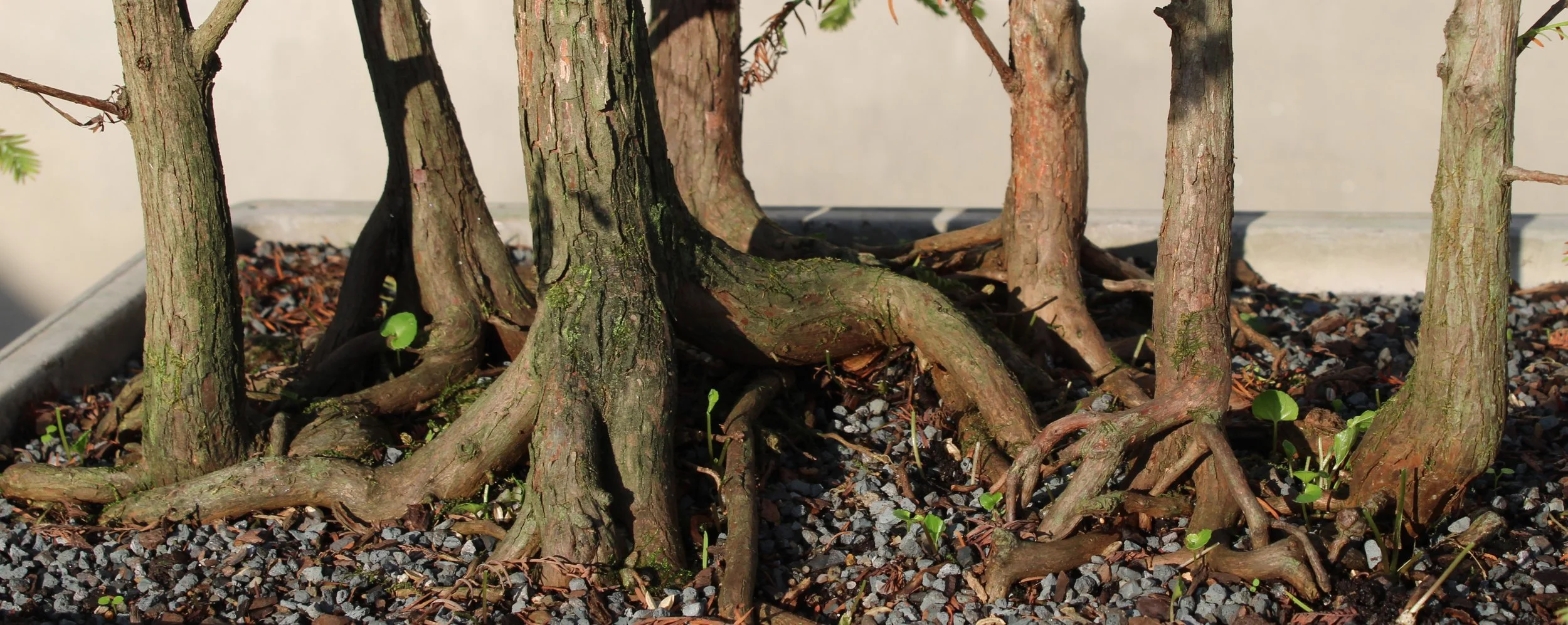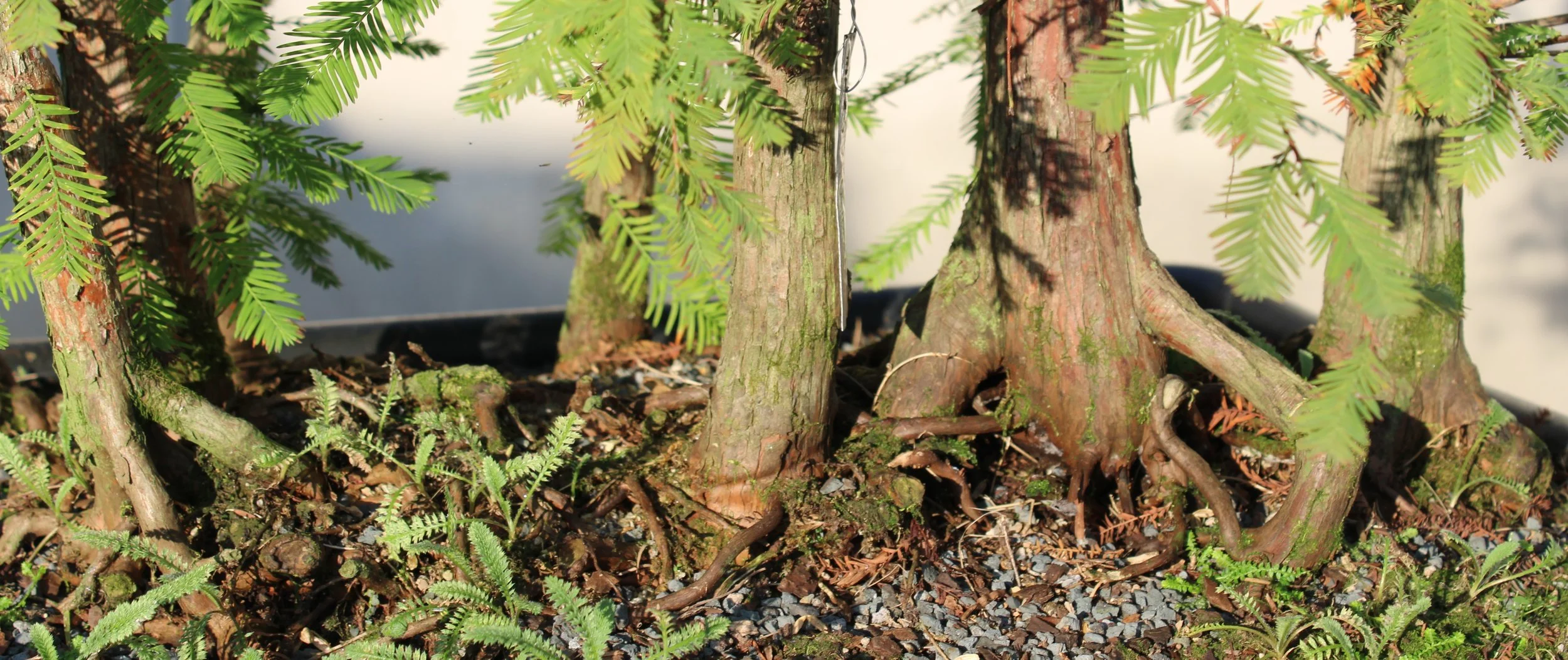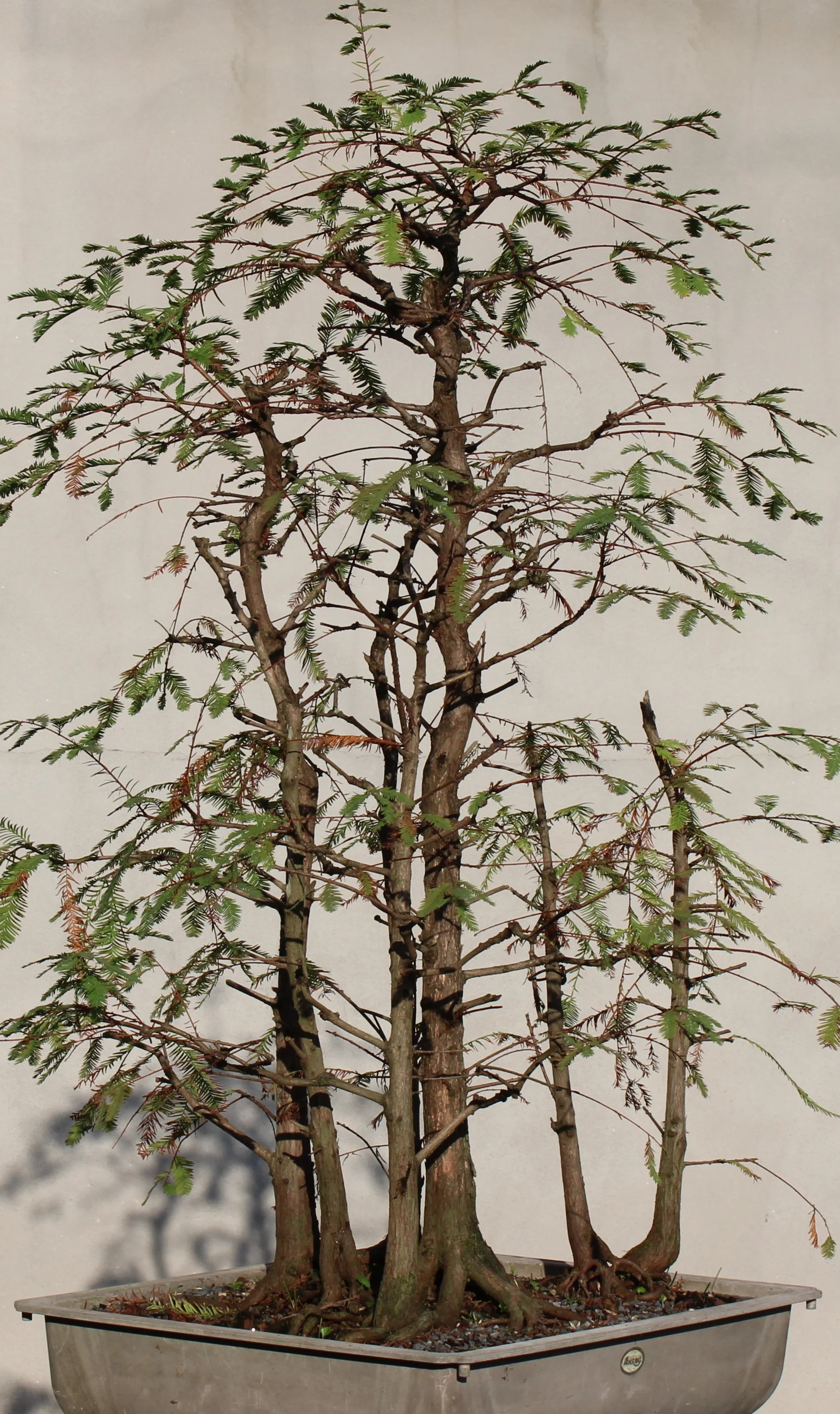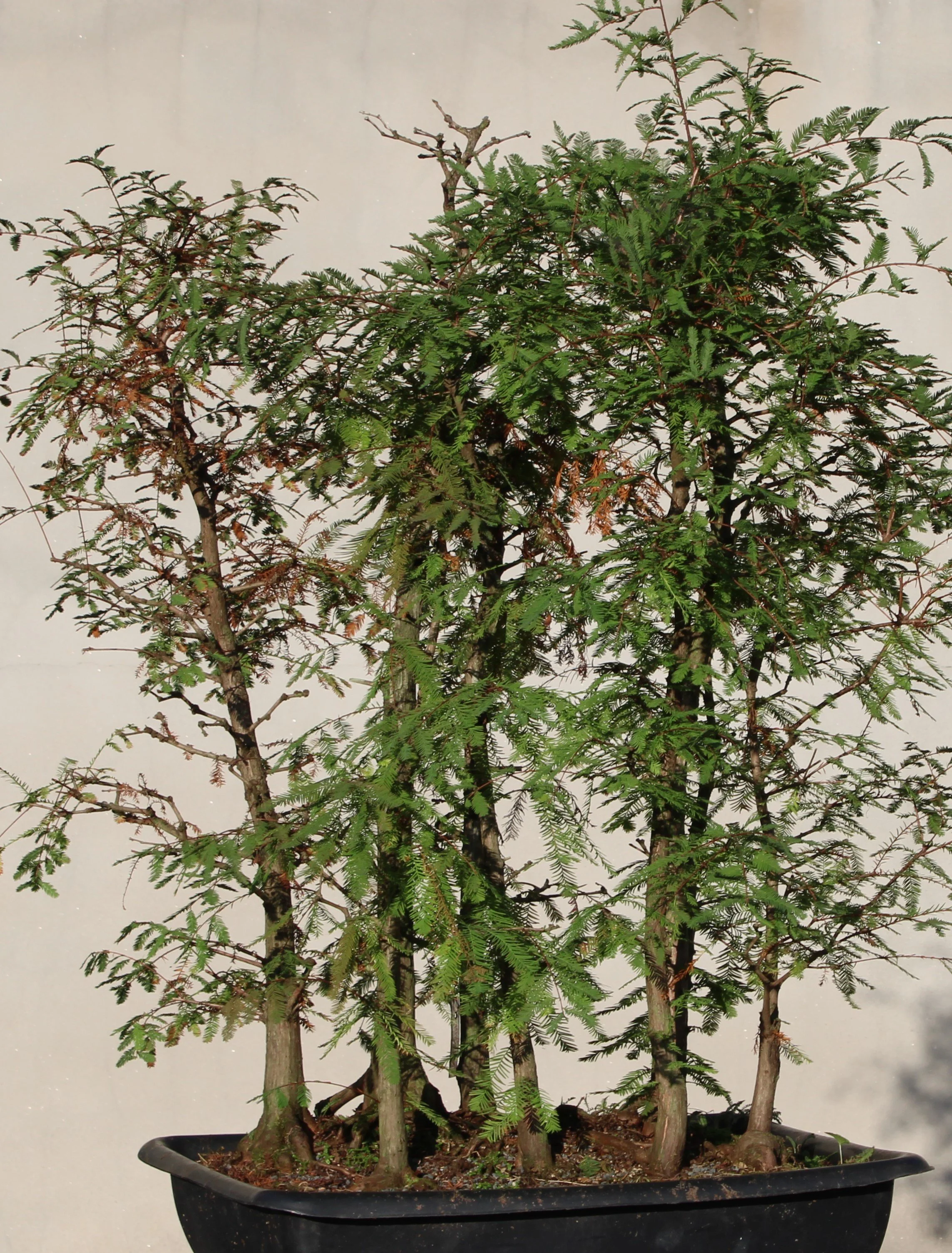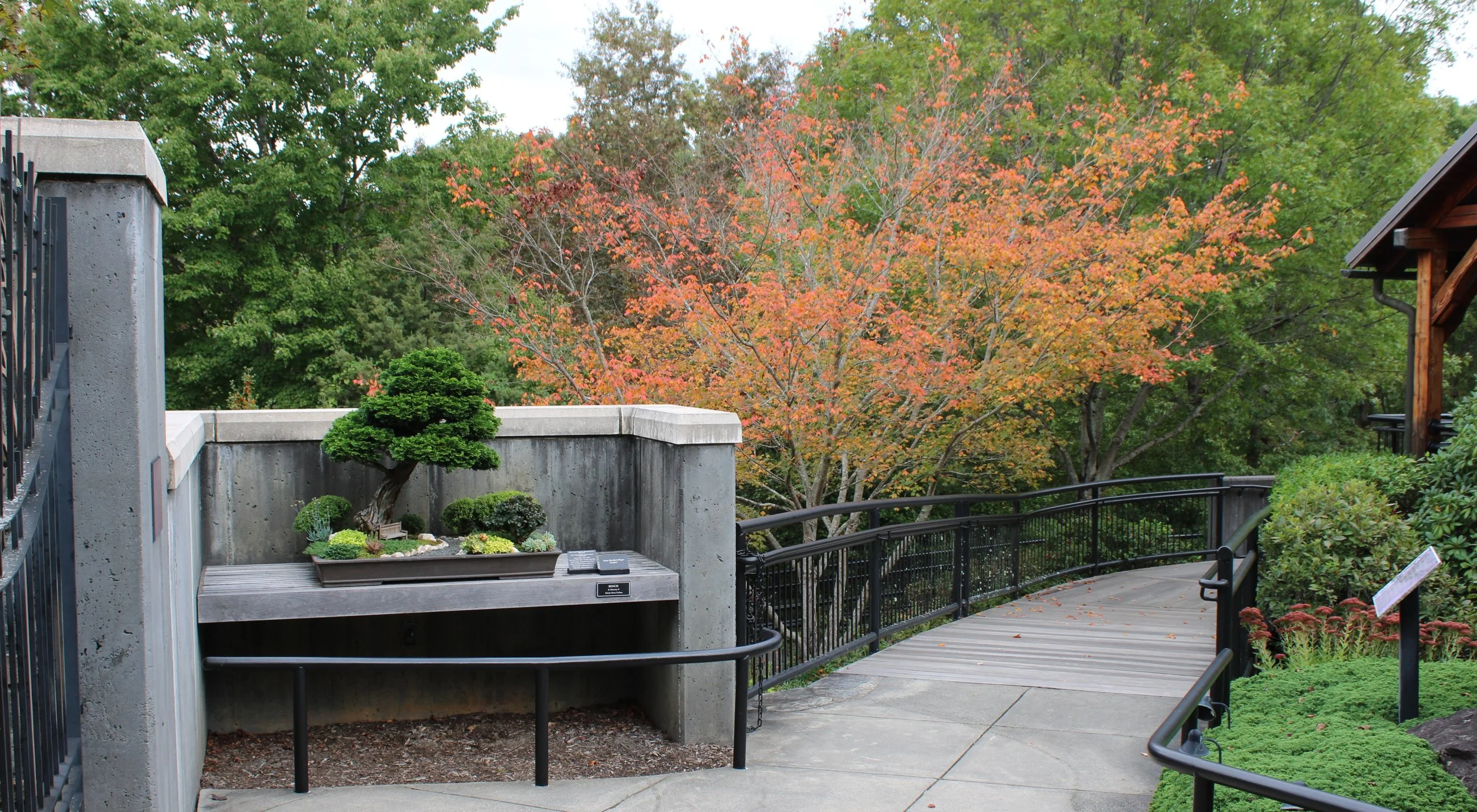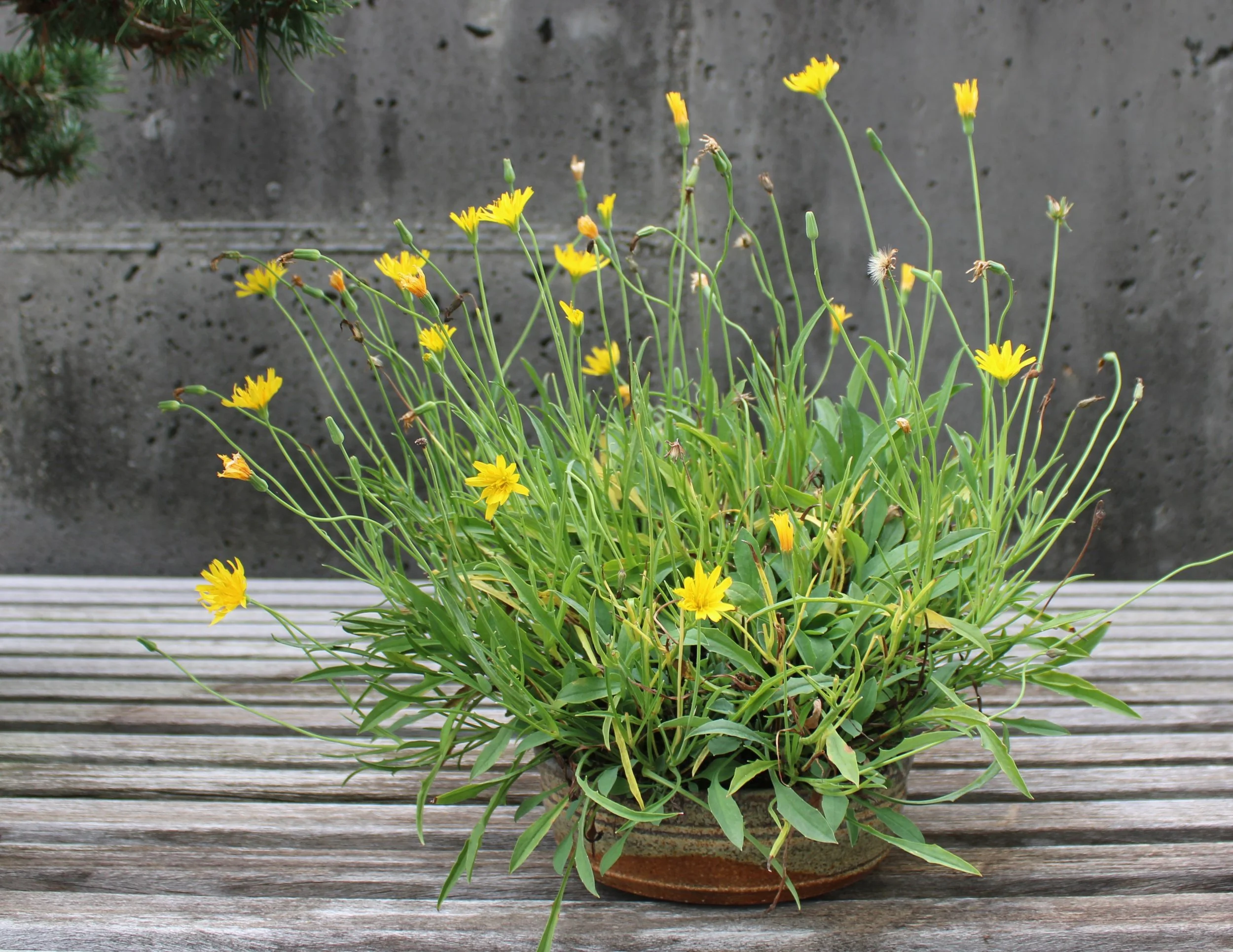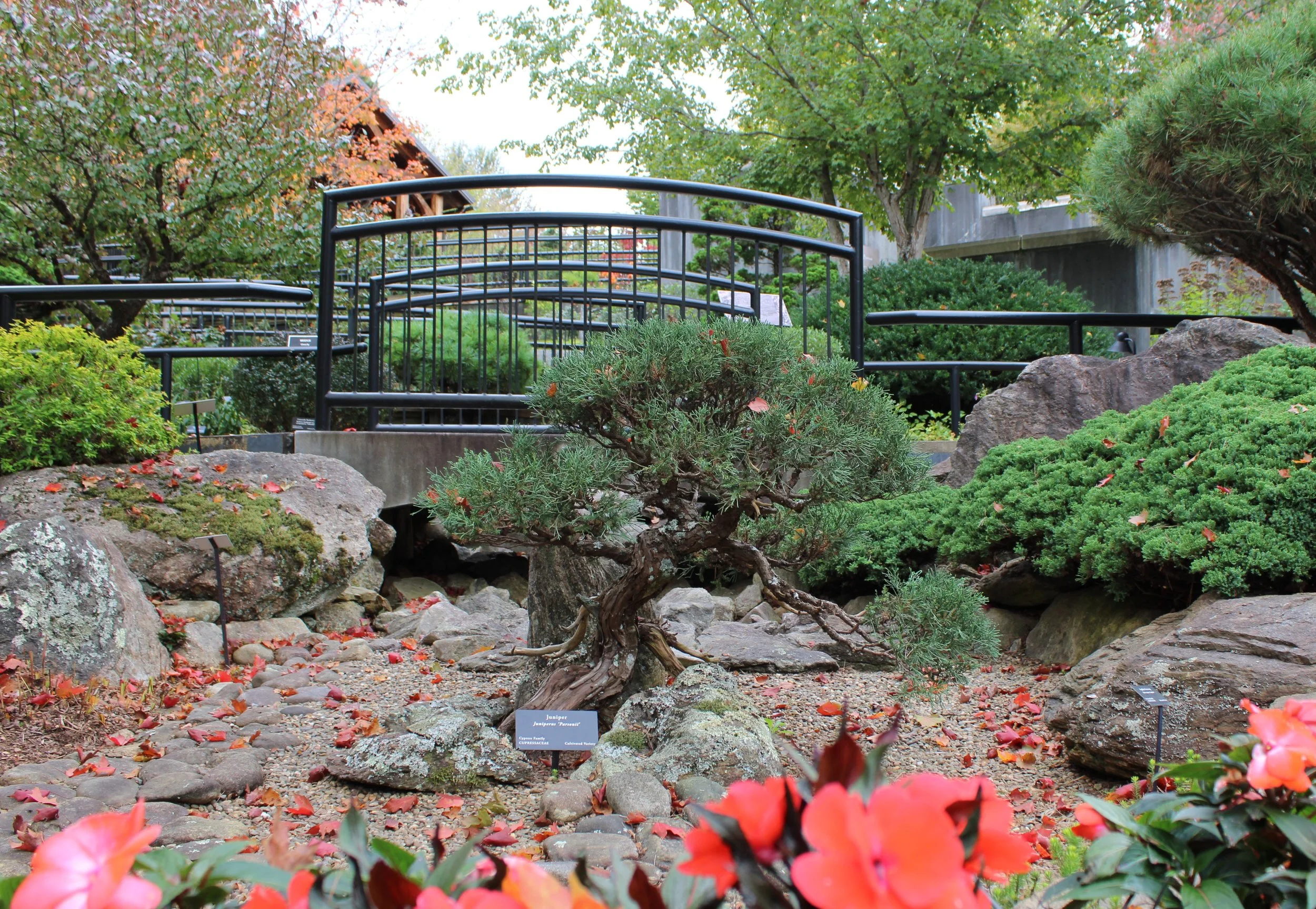Thinking About It
You've made a job for yourself, haven't you? Look at these trees. They're rough as can be, obviously not thriving on neglect. Surviving but not thriving. Look at those roots all tangled up with each other, those trees growing next to each other like that for the past twenty seven years and their roots just growing everywhere, over and under each other, meshed like elongated fingers, braided like drunken rope. You're going to have to cut them apart. It's going to be rough on these trees, probably not all of them will live through the process. The process. That sounds neat and clean, better than saying the ordeal, or the cataclysm. When the process involves a reciprocating saw a certain degree of violence is inherent. But you'll have to separate the trees to make use of some of them, and the saw might be necessary in some cases.
Think in terms of components. There will be some individual trees that get cut out separately, to be plugged back in separately, but you may have some trees you can leave together in a small group, the way they are. That would be less invasive. You'll place any small groups like that into the arrangement as single components, so it will be a tree here, another here, a group there, another group over there. You'll have those younger trees from John, too. Good thing he has them and good thing he's willing to part with a few. Zhao made a big deal about the size differential, how much it mattered in a group planting to have a good range of sizes from the noticeably bigger one to be the main tree right down to some really slender young ones here and there. Remember how when Zhao put this planting together, he wanted a few very small baldcypress, like seedlings, and we didn't have them? He used some thin dowels to mark the places where he thought three seedlings should be added and then urged you to get some and add them in or the piece wouldn't be right.
He was a peculiar one, Zhao was. So precise, almost obsessed about everything being just so, like he could see what he wanted in his head and he'd keep fussing with the thing he was working on until he got it just right. He was exact in his work, admirable as an artist but you never really got a good read on him as a person. He seemed distant. Well, he was a long way from home, surrounded by strangers who looked different than him, who spoke differently, who had different manners and customs, so no wonder. Karin was his connection. She was his voice. When you wanted to speak to Zhao you had to do it through Karin, and when he answered she had to tell you what he said. She was his publisher, his promoter, his interpreter, his defender. Remember that? That was maybe the last time you heard anything about her. It was on the bonsai forum and she had been posting about Zhao and about penjing, thoughtful and intelligent stuff, and then the jackals showed up. Bonsai trolls who had the true religion and weren't going to listen to a girl tell them that the Chinese stuff was in any way equal to the exalted Japanese stuff. They just kept hounding her, mocking her, saying ignorant things. She was defending Zhao's work, defending the legitimacy of penjing as an alternative way to do little trees, defending Chinese culture as the primary influence over so much of Japanese culture, and she was very serious about all of it. She was so educated about all that and she was trying to reason with the jackals while they went on yapping and snapping at her. You felt sorry for her but it was a no-win situation. That seemed to be how the whole internet bonsai forum culture went. Most of the good people, the talented and knowledgeable ones, dropped out eventually because they didn't like being abused by strangers who seemed to think that freedom of speech means insulting people you don't agree with. It's crazy to think people can get that way about little trees. But people can get that way about anything, especially on the internet.
That was a long time ago. What about the job in front of you now — how about the main tree? Which tree will be the focal point? There are three trees from the original planting that could serve that purpose. They're all about the same height as each other, the same diameter, each one relatively well branched. So you choose one of them to be the main tree and then what happens to the other two? If the one you choose is going to be the main tree, the clearly biggest tree, how can you use the other two without undermining the effect of the one you intend to be dominant? And if you take those two non-selected trees out of the equation, you'll be losing two of the better trees you have to work with. Still, the size differential is important. You have to have a main tree and it needs to be one from the original group. It doesn't really need to be, but you want it to be for continuity, as a way to have the old become part of the new. One of those three biggest original trees will be the new main tree and the other two probably won't get used. Probably. Always leave the door open a little bit.
Let's see, there are sixteen baldcypress trees from the original planting, nine in the bigger clump and seven in the smaller. The larger clump still has the dead tree standing in it, so that leaves fifteen living trees total. They're not all usable though. A couple of those smallest trees look pretty scrawny, like they maybe don't have that much life left in them. The larger of the two clumps seems healthier overall, but you'll need at least a tree or two from the smaller group. How many trees do you think will go into the new planting? It won't be sixteen, that's for sure. The trees we gave Zhao were very young and not well developed. He used so many just to fill in the available space and you shouldn't need that many because you'll be working with more mature material. Maybe don't worry about the number. The number doesn't mean much in the end. Focus on the look of it and use however many trees it takes to make it look right.
Yes, and what is that? What is the right look? Would the right look come from trying to recreate what Zhao did, sketching out a diagram of the original planting design then rebuilding it best you can with what you have? That's probably doable, especially since it all goes back into the same format, the same marble slab with the rocks outlining the stream just as he arranged them. People might be expecting that. "In a tribute to a genuine artist and someone who greatly influenced my bonsai development, I will restore his great baldcypress water-and-land creation to its former glory!"
Right. As if that's anything other than an invitation to fall flat on your face. Zhao was important, there's no doubt. You knew he was an artist, not only because the work he did was so good, but because of the way he went about doing it, his manner, his focus and absorption into the work. Yoshimura was an artist and so was Zhao. But beyond being an artist Zhao was also proof of something, a living example of a fact you thought must be true but couldn't prove. There had to be multiple ways of going about it — had to be. If the whole little tree business was truly an art form then there couldn't be just one right way. Art doesn't work like that. Back then there was the Yoshimura way and the Naka way, yet those were just two variations coming from essentially the same place. The bona fides of those two were grounded in their indisputable connection to the holy center of the bonsai universe. Zhao was from the other place. He was a representative of the off-brand, he did the stuff that was denigrated as primitive and unrefined. What a joke! You knew when you saw pictures of Zhao's work that there wasn't anything unrefined about it, and if it was primitive it was primitive in the most admirable sense of the word. Then he came and did the program and made the water-and-land planting, and it became part of the collection and you knew it was very good. You could look at it in person and see for yourself it was very good. You learned from Zhao's example. What he made for us was a powerful influence. It didn't make you want to go into penjing and work in that vein, but rather it caused you to look upon the making of little trees and miniature landscapes as a true form of creative expression. That was it. When you looked at it that way it didn't matter about the country of origin, and you realized any boundaries that existed were self-created, self-enforced. The message you got from Zhao was to go ahead. In China they have a long history of creative expression through the medium of miniaturized plants, and they passed that idea along to the Japanese who copied them for awhile before finding their own way about it. The Japanese then passed the idea along to a lot of other places and there's no good reason to just keep doing it the same way that they showed us. Go ahead. Be respectful of nature and be respectful of everything that's been done before, but be creative and express what's in you. That's what you learned from Zhao. Not that he ever said that, or even necessarily thought that. Communicating with him in words was difficult. That's the lesson you learned, though, through observing him and his work and contemplating his example.
That's enough of that. Trying to recreate what Zhao did isn't likely to work and would actually betray some of the important lessons you learned from him. You'll use what remains of what he created to provide the starting point for something new, that's how it's going to go. That's the only way that makes sense.
But you've made a job for yourself, haven't you?
To be continued…
Autumn has arrived in the bonsai garden. Seasonal color at this point is to be found mostly in the landscape, but the little trees will not be far behind.
